Thu 10 Jan 2008
Small Money, Big Change
Posted by Derek under India
No Comments
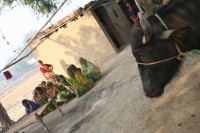
Two years ago, the Nobel Peace Prize was awarded to Muhammad Yunus, the founder of Grameen Bank in Bangladesh – one of the poorest countries in the world. As a result of the award, the microfinance activities of Grameen Bank and other similar institutions around the globe were brought to worldwide attention. I was particularly intrigued by this new type of assistance to the very poor. With some persistence on our part and a little luck, we were able to contact Grameen Bank and arrange volunteer work with a sister organization, Cashpor Micro Credit, located in Varanasi, India.
The theory behind microfinance institutions, or “MFIs”, is fairly simple. The very poor don’t have access to loans from traditional banks. With no assets and no steady employment, banks simply won’t lend to them. Historically, this forced the impoverished to seek credit elsewhere, mainly from village-based moneylenders. These moneylenders charged exorbitant interest rates (e.g., 100% per year) and had less than gentle collection methods, making Tony Soprano look like Snow White.
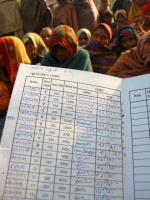
The founder of Grameen Bank saw an opportunity. He began making credit available to the very poor, using a few set of rules that produced incredibly high collection rates. First, loans were typically made available only to women; as our contact at Cashpor explained to us (after first apologizing to me and my gender), men usually take the money and spend it on booze or gamble it away…
Second, the amount of the loans are very small. For example, the loans at Cashpor are typically in the $100-$200 range, with the maximum loan topping out at around $350 per year. This may sound like a paltry sum, but you have to realize that the average daily wage of the very poor in India is around $1 per day!!! Let me repeat that – $1 per day!!! These funds are used for various purposes, with many of the borrowers using the funds to open up a small shop in the village or, in the villages served by Cashpor, to buy a buffalo (whose milk they sell in order to repay the loan).
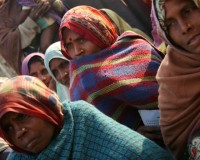
Third, the loans are only given to individuals who are part of a group, usually consisting of 10-20 members. The group is formed by the women in the village, and new members (i.e., individuals who will receive loans) must be approved by the group in addition to the MFI. The group members vow to help pay the loan of a member who, for whatever reason (e.g., the buffalo they bought dies), is unable to pay.
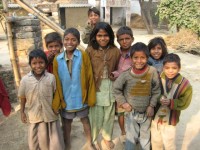
MFIs have been very successful. The collection rate for loans is typically in the high 90% range, a rate that would be the envy of any bank in the world; in fact, many banks are realizing the opportunities that exist in this market (as noted below). Most importantly, the effects these small loans have on the villages that receive them are dramatic. While the villagers are still poor by our standards, they have used the income they’ve produced from these loans to improve their quality of life, building more protective homes (e.g., graduating from a simple tent to a home with mud walls), improving their nutrition and health and educating their children.
During our two days of volunteer work, we feel like we were able to add true value using our respective skill sets. With my background as a corporate and securities lawyer, I was able to help Cashpor review and negotiate the terms of a transaction with the largest bank in India, who wants to enter the profitable microfinance arena but has decided to outsource its activities to Cashpor instead of starting the business internally. In addition, we assisted in structuring a new benefit to the borrowers that forgives loans in the event the borrower or her spouse dies during the repayment period of the loan. As a previous press secretary in the US Senate, Shanna used her media skills to rewrite parts of the annual report that is distributed each year to current and prospective investors of Cashpor.
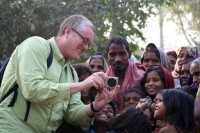
The highlight of our time with the organization was our visit to one of the villages serviced by Cashpor. We sat in on two different group meetings, led by staff members of Cashpor on a weekly basis. These meetings allow the villagers to ask questions and voice their concerns, and allows Cashpor to collect the weekly payments (which are recorded in a booklet retained by the borrower). After the meeting, we took a few photos of the women and the children of the village. After I showed one kid a picture I took of him on the digital camera, I was swarmed by dozens of other children wanting me to take their photo and show them the result. We’ll never forget the smiles on their faces.
[embedplusvideo height=”350″ width=”450″ editlink=”http://bit.ly/1t0stCK” standard=”http://www.youtube.com/v/GyL6zBU2GjM?fs=1″ vars=”ytid=GyL6zBU2GjM&width=450&height=350&start=&stop=&rs=w&hd=0&autoplay=0&react=1&chapters=¬es=” id=”ep2114″ /]
No Responses to “ Small Money, Big Change ”